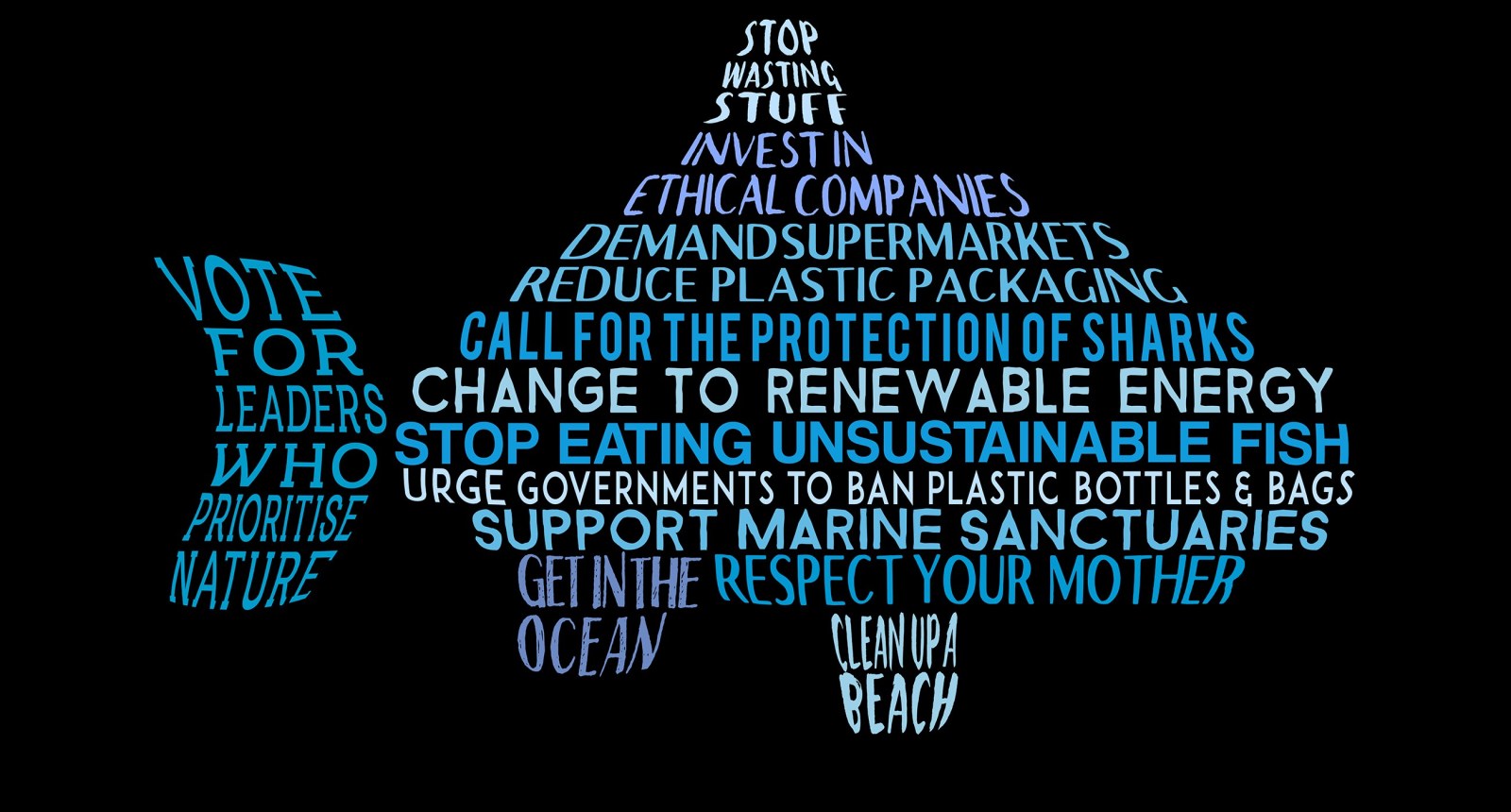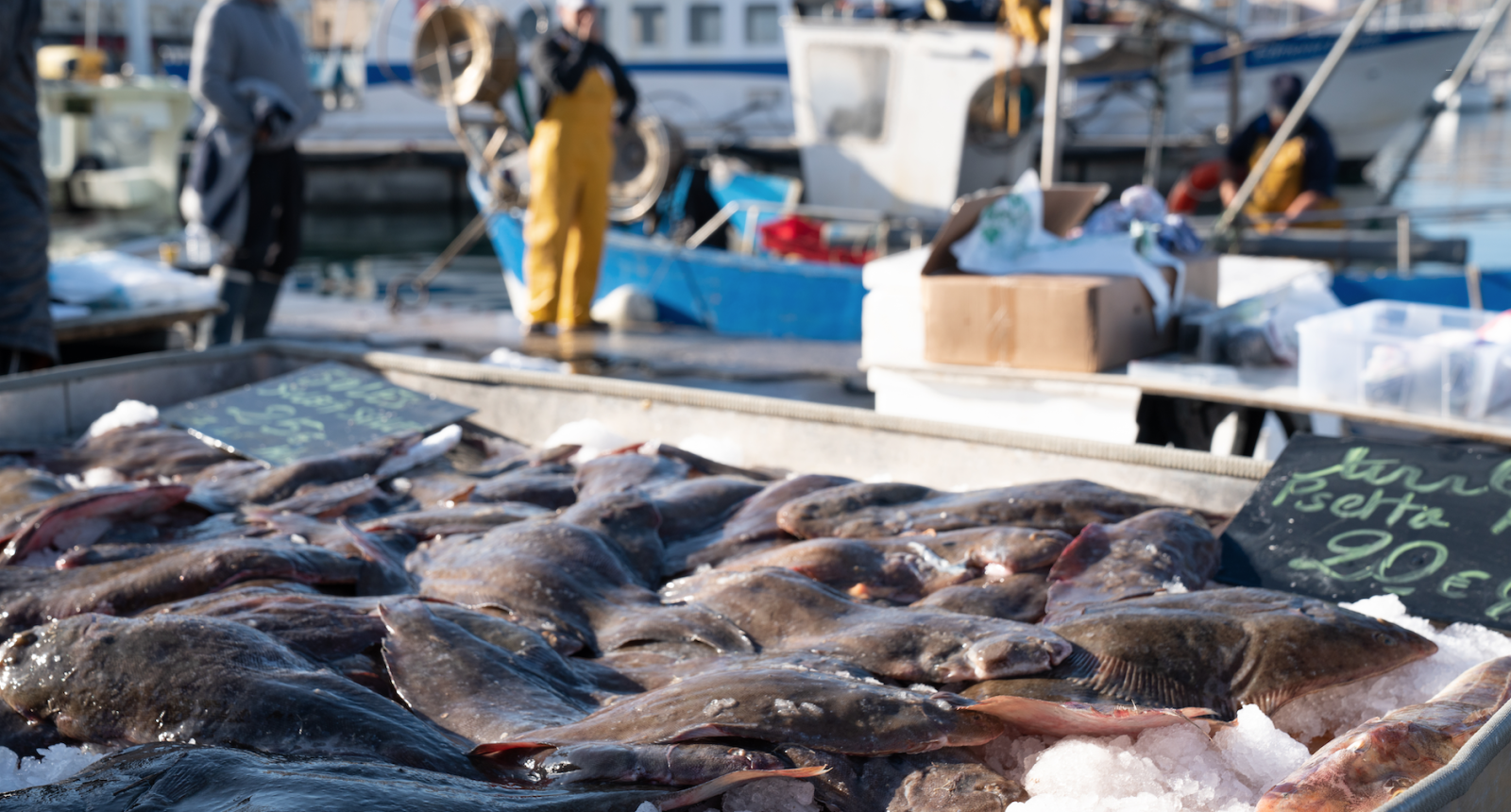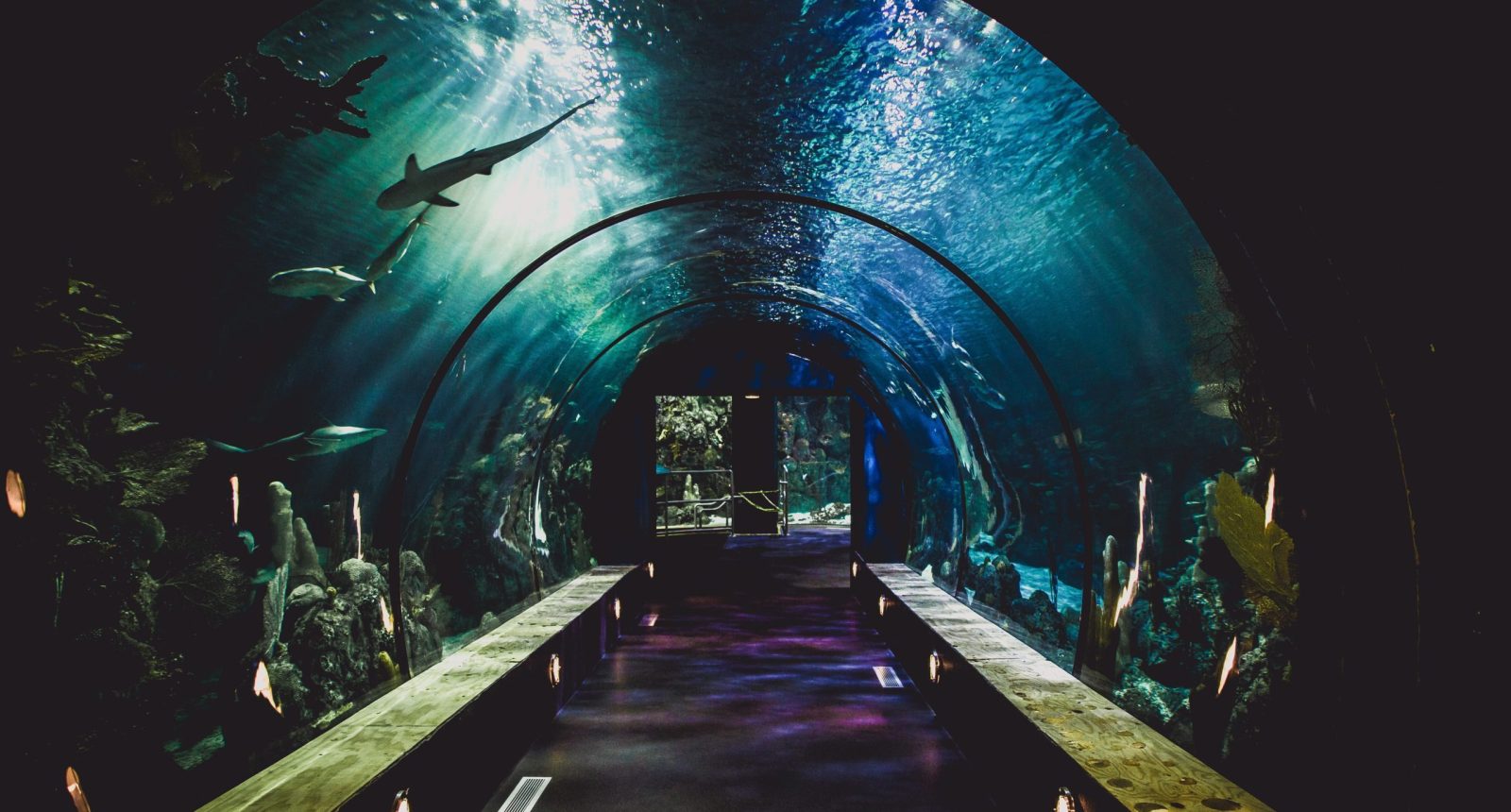
Half of all marine life has disappeared in the last 40 years.
Scientists predict that by the year 2050 there will be more plastic in the ocean than fish.
These are the terrifying facts about the current state of our oceans. Though oil and seafood industries, tourism companies, and other organizations benefiting off of the exploitation of our greatest resource would rather paint a picture of false abundance, the fact of the matter is that the ocean is in big trouble.
The documentary “Blue” by Karina Holden tackles a handful of marine issues across the globe to show exactly how we got here and the harmful practices that continue to threaten the very survival of our oceans.
The film tells the story of six different “Ocean Guardians” who are each fighting a different ocean issue but together working tirelessly for the protection and conservation of the sea.
 Beginning with Madison Stewart, or better known as “Shark Girl Madison”, the film dives into the disturbing, “legal” shark finning industry, where 73 million sharks lose their lives every single year. This segment of the film shows grim footage from an Indonesian market, where thousands of dead sharks are being tossed onto the ground awaiting a man with a sharp knife to hack their fins off.
Beginning with Madison Stewart, or better known as “Shark Girl Madison”, the film dives into the disturbing, “legal” shark finning industry, where 73 million sharks lose their lives every single year. This segment of the film shows grim footage from an Indonesian market, where thousands of dead sharks are being tossed onto the ground awaiting a man with a sharp knife to hack their fins off.
 Indonesia is one of the world’s largest shark catchers due to a high demand for shark fins in Singapore, Hong Kong, and China. While these scenes were upsetting and difficult to watch, it’s the terrifying reality that sharks are living in. In one scene, Stewart is speaking with a fisherman over a massive tiger shark that had just been killed. “I have never seen one of these [sharks] this big, in the wild.”
Indonesia is one of the world’s largest shark catchers due to a high demand for shark fins in Singapore, Hong Kong, and China. While these scenes were upsetting and difficult to watch, it’s the terrifying reality that sharks are living in. In one scene, Stewart is speaking with a fisherman over a massive tiger shark that had just been killed. “I have never seen one of these [sharks] this big, in the wild.”
 The film then looks into the work of Mark Dia, the Regional Oceans Campaigner for Greenpeace South East Asia. Dia’s segment of the film follows him through another fish market in Indonesia where tuna are being caught and sold illegally. His work, both tedious and dangerous, aims to put a stop to this unsustainable fishing in order to stabilize fish populations and give small fisherman a fair chance in the industry.
The film then looks into the work of Mark Dia, the Regional Oceans Campaigner for Greenpeace South East Asia. Dia’s segment of the film follows him through another fish market in Indonesia where tuna are being caught and sold illegally. His work, both tedious and dangerous, aims to put a stop to this unsustainable fishing in order to stabilize fish populations and give small fisherman a fair chance in the industry.
 Next, Blue hops back over to Australia, into the Cape York peninsular, where Phillip Mango is a Senior Nanum Wungthim Land and Sea Ranger. Mango is tackling the issue of marine pollution, and more specifically kilometer-long ghost nets that have washed up on his beach, abandoned by illegal fishing boats.
Next, Blue hops back over to Australia, into the Cape York peninsular, where Phillip Mango is a Senior Nanum Wungthim Land and Sea Ranger. Mango is tackling the issue of marine pollution, and more specifically kilometer-long ghost nets that have washed up on his beach, abandoned by illegal fishing boats.
 In one shot of this segment, Mango pulls up a massive net that has been buried deep in the sand along the shoreline and has the skeletal remains of several sea turtles who most likely drowned after being tangled in the nets and unable to escape. Mango now works closely with organizations such as the Cairns Turtle Rehabilitation Centre to rescue injured sea turtles who have become tangled in these ghost nets.
In one shot of this segment, Mango pulls up a massive net that has been buried deep in the sand along the shoreline and has the skeletal remains of several sea turtles who most likely drowned after being tangled in the nets and unable to escape. Mango now works closely with organizations such as the Cairns Turtle Rehabilitation Centre to rescue injured sea turtles who have become tangled in these ghost nets.
 The film then tells the story of Dr. Jennifer Lavers, who originally from Canada, is now living on a remote island in the South Pacific where she is studying the effects of plastic pollution on seabirds. During one scene of this segment, Dr. Lavers flushes a young seabird’s stomach to see what it has been ingesting to reveal 275 pieces of plastic. Dr. Lavers shines a light on the importance of seabirds and how their very existence as a species is being threatened by our careless, throwaway society.
The film then tells the story of Dr. Jennifer Lavers, who originally from Canada, is now living on a remote island in the South Pacific where she is studying the effects of plastic pollution on seabirds. During one scene of this segment, Dr. Lavers flushes a young seabird’s stomach to see what it has been ingesting to reveal 275 pieces of plastic. Dr. Lavers shines a light on the importance of seabirds and how their very existence as a species is being threatened by our careless, throwaway society.
 Next, we hear from Tim Silverwood, an environmentalist, surfer, and founder of the “Take3 – Clean Beach Initiative” that encourages beachgoers to pick up three pieces of garbage when they leave a beach.
Next, we hear from Tim Silverwood, an environmentalist, surfer, and founder of the “Take3 – Clean Beach Initiative” that encourages beachgoers to pick up three pieces of garbage when they leave a beach.
 Tim’s work involves campaigning for marine pollution and educating young people in schools across the world on the issue of plastic pollution in our oceans. Take3 has set a goal to remove 3 million pieces of plastic from the ocean over the next three years.
Tim’s work involves campaigning for marine pollution and educating young people in schools across the world on the issue of plastic pollution in our oceans. Take3 has set a goal to remove 3 million pieces of plastic from the ocean over the next three years.
 Finally, the film looks into the life of Lucas Handly, a freediver and marine biologist with a fiery passion to save the oceans. He works to promote a global approach to ecologically sustainable development. During his segment of the film, Handly freedives to depths of up to 55m on a single breath and exposes the frightening sight of bleached coral along the ocean floor. In addition to sharing ocean issues through his underwater photography, Handly works with Scuba for Change, an organization that invests in Pacific Island communities and their sustainable future. He is currently helping villagers in the Solomon Islands and the Philippines keep their reefs intact by developing their own ecotourism enterprises.
Finally, the film looks into the life of Lucas Handly, a freediver and marine biologist with a fiery passion to save the oceans. He works to promote a global approach to ecologically sustainable development. During his segment of the film, Handly freedives to depths of up to 55m on a single breath and exposes the frightening sight of bleached coral along the ocean floor. In addition to sharing ocean issues through his underwater photography, Handly works with Scuba for Change, an organization that invests in Pacific Island communities and their sustainable future. He is currently helping villagers in the Solomon Islands and the Philippines keep their reefs intact by developing their own ecotourism enterprises.
Overall, Blue was one of the most powerful marine documentaries I’ve ever seen that did an excellent job of touching on a variety of different issues without overwhelming viewers or making them feel like we’re all doomed. The film is shorter than usual documentaries and was shot in a variety of locations to really help viewers grasp the scope of this global problem. The best thing about Blue is that it’s not just a film for environmentalists, it’s something that everyone can enjoy.
Blue is not pushing an extreme, change your entire life to save the planet agenda. Instead, it proposes a range of small and large-scale changes that can help marine ecosystems recover. This movie emphasizes that everyone can do their own thing and still have a huge impact, from changing the way you eat to rethinking your plastic use.
However, one thing is for sure. Once you’ve see Blue and the horrendously unsustainable practices occurring in our seas, you will not be able to ignore it.

CLICK TO LEARN MORE ABOUT BLUE AND HOW YOU CAN GET INVOLVED.
Sorry, the comment form is closed at this time.




Rosie
Blue sounds fascinating, and horrifying at the same time. I would love to see it, hopefully they’ll have some UK screenings soon.